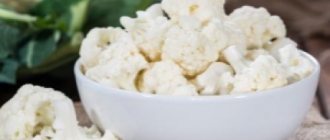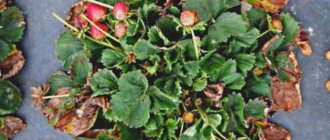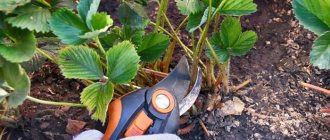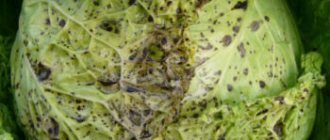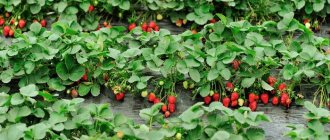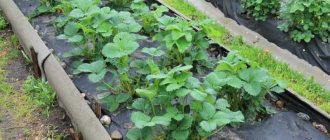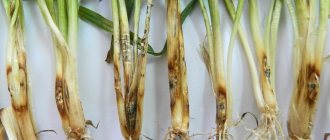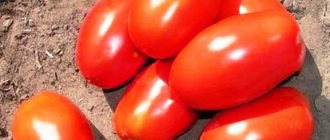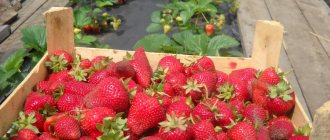The fragrant and unusually tender berry is one of the first harbingers of the summer extravaganza.
Still, gardeners are upset by the fact that diseases of strawberries and strawberries often destroy a rich harvest. It is possible to save your lands from invisible pests! You just need to take a number of smart actions. Especially when the first signs of the most common cultural ills appear. Weather plays a huge role in the active development of diseases. If it’s damp and cool outside, and buds are starting to form in the garden bed, then this should be a serious cause for concern. During this period, it is necessary to monitor the plant especially carefully, since small spots on the foliage can tell a lot.
It is worth considering that harmful microorganisms progress under certain conditions. Therefore, the gardener’s task is to prevent their occurrence.
Reasons why the middle of the strawberry flower turns black
Damage to the middle of flowers can occur for various reasons. In the month of May, the air temperature often still fluctuates, and the harvest is caught by night frosts. Frost causes the central part of the flower to darken. Also, one of the main reasons for blackness in the core is pests. Let's take a closer look at these factors.
Blackening of strawberry flowers
Pests
Blackening of the flower core can occur due to pests, namely the raspberry-strawberry weevil. A small black bug measuring 2 mm significantly spoils the harvest. After overwintering in mulch or fallen leaves, it rushes to berry crops.
The most comfortable temperature for culture development is +18+20C . During the formation of buds, pests lay eggs in them, one in each inflorescence. Eggs up to 0.35 mm in size appear already on early ripening strawberries. The emerging larvae begin to eat away the middle of the flower and continue to feed on the core for 1-1.5 months.
Signs of damage by the raspberry-strawberry weevil:
- the flower stalks begin to dry out, the buds do not bloom;
- small holes appear on leaves and flower petals;
- the core of the flower turns black.
Strawberry weevil
Weather
Blackening of the middle of the flower occurs due to the sudden onset of frost. Frosts first of all affect the fragile central part of the flower - the receptacle.
The leaves of remontant strawberries can withstand cold temperatures of -8C..-10C; if the temperature drops below -3C, damage to the ovary occurs. If frost reaches the root of the plant, the entire crop dies. It needs to be removed and the soil dug up for another crop. If the rhizome is not damaged, then a decrease in temperature affects the leaves. The berry has a chance to recover.
Blackened flowers will not bear fruit, so they need to be carefully cut off or shoed. Frosts greatly affect the yield and reduce it by a quarter. Only surviving flower stalks will bear fruit.
Flower buds are susceptible to damage at different stages of shrub development. And during the budding period they are most susceptible. Obvious factors of frost damage to flowers are:
- darkened flower core;
- blackness at the tip of a ripe berry.
Strawberry flower under the snow
Types of rot
Gray rot on strawberries is considered especially dangerous (potassium permanganate is prepared in a ratio of 5 g/10 l). Often it is almost impossible to get rid of mold. It affects more than 85% of the berries, thereby destroying a huge amount of the crop. The entire above-ground part of the crop suffers from the fungus. There are several types of rot:
- Black. Protrudes on roots or berries. Preventive measures: treat the planting with boric acid (10 g of the drug is diluted in a bucket of water) or place the seedlings exclusively in elevated places. The roots suffer when the crop grows in one place for a long time or is planted after potatoes, corn and tomatoes.
- White. Due to dense planting and dampness, the strawberries become covered with white fluff and eventually rot. Therefore, young bushes are thinned out. At the same time, an elevated area is selected for the plant.
- Anthracnose. A purple edging appears on the leaves. The stems are covered with gray spots, and brown rot appears on the fruits. Occurs when the soil is heavily waterlogged.
- Gray. The fungus appears as a grayish coating. The fruits acquire a watery texture. Reasons: damp and cool weather. Control: timely removal of infected greenery, thinning and straw mulch.
Spraying with chemicals is carried out at temperatures above +10°C, and also at the appropriate time: before the formation of buds or after harvesting the last fruits.
Strawberry diseases can be a disaster for a gardener. However, if their manifestation is detected in time, and even better, preventive measures are taken, then such fatal consequences can be avoided.
How to protect the berries so they don't turn black?
Depending on the reason for the darkening of the center of the flower, a number of measures must be taken to save the harvest.
Protection from low temperatures of flowering strawberries
The bush tolerates winter well, keeping warm under a thick layer of snow. If there is no snow and the temperature stays below 8C, then it is recommended to cover the bushes with straw mixed with manure, sawdust, and leaves in a 10cm layer.
In spring, it is recommended to take the insulating material away from the garden, as insect larvae may remain in it. Ignoring the insulation of strawberries in winter risks freezing not only the flower buds, but also the fruiting bushes themselves.
To avoid darkening of the bushes when the temperature drops, you need to carry out a number of other actions in the autumn:
- burn old leaves, especially those that have been susceptible to disease;
- apply organic and mineral fertilizers;
- mulch and hill up the soil around each plant.
Protecting strawberries from frost with agrofibre
Spring protection of flowering berry bushes from frost is as follows:
- It is advisable to protect the first blooming flowers. This is done using sprinkling. The procedure does not allow the plant to freeze and releases heat if the temperature drops to 0°C degrees.
- Smoke from plantings. Surrounding the crop with smoke is carried out as follows: hay, straw or branches are piled up on the side where the smoke will fall on the crop. You can add moss or raw grass on top.
- Covering with agrofibre. If frosts continue for several days, then in the evening you need to cover them with agrofibre and remove them in the morning so that pollination of the flowers occurs.
Protection against pests that attack the core of flowers
When protecting the crop from weevils, you need to be especially careful during the period of bud formation. At this time, female insects gnaw through the side of the flower and lay eggs in it.
After some time, the darkened bud either dries up right on the bush or falls off to the ground. During this period it is too late to fight the pest. One generation of weevils develops per season. Early varieties of strawberries are especially susceptible to insect damage.
Strawberry and wild strawberry flowers turn black: causes and solution
Strawberries and wild strawberries are quite fastidious crops that require a lot of attention and care. One of the most common problems for gardeners who grow berries is the blackening of the flower centers or the appearance of black dots on them. This is quite a serious problem that can lead to a decrease in yield and even the death of bushes, so the owner of the plantings must determine the cause and eliminate it as soon as possible. Why does the middle of the flower turn black in strawberries and wild strawberries, and what to do in this case.
Reasons for blackening of strawberry flowers
There can be two reasons for the appearance of black dots or spots in the center of strawberry and strawberry flowers: too low temperatures and damage by harmful insects. Each of them has its own characteristics and requires certain measures to eliminate negative factors and save culture.
Frost
The most common cause of blackening is low temperatures. Most often they are observed in regions with so-called return frosts, that is, significant cold snaps in late spring and early summer. The leaves of garden berries can withstand temperatures down to -10 degrees, but the ovaries can die at -2 or -3 degrees.
If frostbite occurs in strawberry or strawberry plantings, it will not be possible to completely save the crop - you need to carefully examine the bushes and decide what to do with them in the future. If frosts have damaged only the flowers, you need to remove the damaged inflorescences - they will not produce a harvest and will draw nutrients from the healthy parts of the bush.
In cases where the damage affected not only flowers, but also leaves, all flower stalks can be torn off from the plants, since they most likely will not produce berries. Such plantings will bear fruit next year, when new shoots emerge from dormant buds. If the roots are damaged, it is better to dig up the soil for other crops - it is no longer possible to save the bushes in such a situation.
How to protect berries from frost
To avoid the death of strawberry and strawberry bushes under the influence of low temperatures, it is important to properly care for the plantings, since frosts primarily damage weak and depleted plants. An important role is played by the correct preparation of plantings for winter, which must begin in late autumn, after which the bushes must be mulched.
The optimal time to start the procedure is the autumn period immediately after the onset of the first frost. Bushes that have survived exposure to low temperatures will be more resistant to negative factors in the spring. Before mulching, it is necessary to remove daughter rosettes from plants, as well as old, diseased and damaged leaves, and feed them with organic matter or mineral fertilizers. The last stage is hilling and mulching the bushes, that is, directly protecting them from frost.
The best protection for strawberry and strawberry plantings from low temperatures is snow, which allows the plantings to survive the winter without loss. If frost has already arrived, but there has been no precipitation yet, you can cover the bushes with spruce branches or pine needles. This is an ideal natural mulching material that does not get wet, does not stick together and does not attract rodents. In the absence of pine needles, you can protect the bushes with compost, straw, humus, and dry leaves.
Another option is a special material called spunbond, but it cannot be placed directly on the leaves, as they will freeze at the points of contact. To protect plantings from frost using such material, you need to strengthen the arcs over them and stretch spunbond over them.
In spring, you can also protect the bushes with the help of special material - they need to cover the bushes in the evening and remove them in the morning so that the plantings can be pollinated. You can smoke the plantings - put hay, straw, branches and moss in one direction, set fire and fumigate the bushes with smoke.
Harmful insects
The second common cause of blackening of the centers of flowers is a harmful insect called weevil. This is a small black beetle that causes serious damage to plantings. It overwinters in mulch or fallen leaves, and after the temperature rises above 18-20 degrees, it lays eggs in the middle of the inflorescence. After some time, larvae emerge from them and feed on the middle of the flower for a month. Signs of weevil damage to bushes include:
- drying of peduncles and buds;
- the appearance of small holes on leaves and petals;
- blackening of the center of the flower.
Chlorosis on strawberries: why does it come?
And our strawberries grow under the arches - partially. The part that is under the arches is not happy with chlorosis every spring. The one that was under the agro-fabric and which we put on at night is relatively green. But not really!
In fact, there are many types of chlorosis (the problem is called elementosis): potassium, magnesium, nitrogen starvation, etc.
And more often than not, chlorosis does not come alone: there is no lack of one element - there is a deficiency of many, a pronounced nutritional imbalance. Often, small, deformed fruits, poor set, and few berries are observed - and this is a lack of boron and zinc.
Causes of chlorosis:
- Low temperatures: at low temperatures, the root plant reduces the consumption of nutrients, plant growth is slowed down.
- Difference t - night and day.
- High soil moisture (rain or over-watering): plants consume nutrition from the soil solution. In waterlogged soil, the concentration of nutrients and salts is reduced.
- Insufficient light levels result from decreased photosynthesis.
- Excess nitrogen fertilizers, which can result in a deficiency of potassium, phosphorus and other elements.
- Excess organic matter - application before planting or early fertilizing with manure, compost mulch, etc.
Alkaline soil, carbonate or strongly acidic: impaired mobility of metal ions, reduced availability of elements. By the way, strawberries like slightly alkaline soil.
In general, we had a bunch of problems: the spring was cool and wet, and the strawberries under the arches were not often opened - but they should have been more often. And we generously added organic matter in the fall - although I know that this is absolutely not worth doing. And our soil is alkaline.
What to do about chlorosis
Repeating the experience of last year, when chlorosis came exactly like that - but I didn’t learn the mistakes.
Again, we were in no hurry to treat the sheet with iron, as many useful tips advise. Iron deficiency doesn't just happen
- and most often it is a complex deficiency. And agricultural technology.
They began to open the strawberries more often during the day - in fact, they covered them only at night, they laid out straw mulch, which reduced watering. But - after feeding.
And we decided to feed them again with Crystal - 3:11:38 + Mg - best suited for spring, according to the needs of strawberries, and for chlorosis. But after a week, iron chelate will also come in handy for prevention. By the way, the Master is no worse - about the same NPK ratio.
Why not the other way around? Therefore, not my idea - the agronomist advised last year: first it is important to eliminate the imbalance
Last year, this approach completely corrected the situation: the strawberries turned green even without iron:
just light and balanced feeding. Well, iron will come in handy
Here is the annual experience of strawberry chlorosis. Don't let it be useful
How to protect berries from pests
Prevention against weevils can begin after the first buds appear in the leaf axils; the air temperature should be at least 10-12 degrees. To avoid damage to plantings by weevils, you need to take the following measures:
- promptly cut off old, diseased and damaged leaves and burn them away from the plantings;
- spray the bushes with infusion of tobacco, mustard, garlic (proportions are approximately 200 g per 10 liters of water);
- you can treat plants with a solution of laundry soap, which is sprayed on the leaves daily in the evening;
- A good effect is achieved by treating strawberries and wild strawberries with insecticides: Iskra-bio, Agravertin, Inta-vir (the procedure should be carried out approximately 5 days before flowering, so as not to harm pollinating insects).
Between the beds of strawberries and strawberries, you can plant plants that repel pests with their aroma - onions, garlic, marigolds, nasturtium, calendula.
Darkening of strawberry and wild strawberry flowers indicates serious damage to the plantings. To prevent their death and maintain a good harvest, you need to properly care for the bushes and take preventive measures to protect them from frost and harmful insects.
Strawberry chlorosis
In terms of its composition, strawberries are a unique crop that has a number of beneficial properties. It strengthens the immune system, prevents the development of colds, and can also reduce elevated body temperature. This berry cleanses the human body of toxins and treats heart disease. In addition to numerous beneficial properties, it has a wonderful aroma and excellent taste. Thanks to this, strawberries are grown in almost all garden plots.
In the process of caring for crops, it happens that gardeners encounter various problems with growing a plentiful and healthy harvest. Sometimes yellowed leaves appear on strawberries. As soon as this symptom is detected, it is necessary to begin taking measures in order to save the future harvest.
Causes of yellowing strawberry leaves
The reasons why the color of the leaf plate changes may be various factors. For example, incorrect planting means making some mistakes in the process of planting plants in open ground. If strawberry bushes are planted at a large distance from each other, then direct sunlight on the berry bush can lead to burns of the leaves. To prevent this problem, the crop is covered with special materials.
The close proximity of strawberry bushes leads to shading of the beds, which means the opposite effect will occur: the strawberries will begin to lack sunlight. The roots will not receive the required amount of nutrients from the soil, which will also lead to yellowing of the green foliage. In addition to the yellow color of the leaves, dense planting and lack of fresh air can lead to the appearance of a black stem on strawberries. This disease is manifested by blackening and rotting of the root collar of the plant. Also, if the taste of strawberries is bitter, this may indicate that the crop grew in unfavorable conditions with low light.
When choosing an area for strawberry beds, you need to select the “right neighbors.” Neighborhood with tulips or raspberries often leads to the fact that a pest such as a weevil moves from them to strawberries. When this insect appears, in addition to yellowing of the leaves, the center of the strawberry flower turns black.
Damage to strawberry flowers
Also, if strawberry flowers have black centers, this may indicate that the berries are frozen and there will be no harvest from such flowers. Therefore, so that the strawberry core does not turn black and the harvest is good, it is recommended to cover the crop with special material before the first frost.
It is worth noting! If the flowers on garden strawberries turn black due to frost, then the varieties that produce crops all season will still delight you with their berries.
In addition to proximity to other crops, it is important to follow the rules of crop rotation. Strawberries are best planted after cereals, radishes, parsley or garlic. You should not plant strawberries after aster or nightshade.
Yellow spots indicate increased soil acidity. Therefore, in order to save the harvest, it is necessary to measure the pH level before planting strawberry bushes. If there are indications, then soil deoxidation should be carried out.
In the case when everything is in order with the leaves of the crop, but the strawberries do not ripen completely, becoming brownish in color and with a bright sweet taste, this indicates that the berries are affected by a dangerous fungal disease - leathery fruit rot. Affected bushes must be destroyed immediately, because Over time, they will die anyway, and this way it may be possible to save the healthy ones.
Spots on strawberries
The gradual acquisition of a yellowish color by the leaves, and also if the strawberries do not ripen, may indicate that the plant has suffered from a disease such as strawberry chlorosis. This disease should be examined in detail and ways of effective treatment should be found.
We identify strawberry/strawberry diseases by color
It is the change in the shade of green/berry, which is accompanied by the appearance of dark spots, that indicates the presence of “uninvited guests” - insect pests or pathogenic spores. There are several types of spotting. It's wise to start with the less dangerous ones first.
Brown or black
Brown spot symptoms most often appear in mid-summer. The petioles, tendrils, and leaves on the strawberries turn brown and dry out. The process occurs in several stages:
- first, areas of a reddish tint appear on the bush (they are angular or irregular in shape);
- Over time, the spots darken;
- later the entire surface is covered with black dots, from which mucus oozes;
- As a result, the foliage fades and dries out completely.
On the petioles and tendrils, the spotting has a completely different character. It is presented in the form of small depressed inclusions of black color. The causative agents of such ailments are considered to be fungal spores. Their spread is facilitated not only by insects, but also by wind and rain.
On this topic:
BACK
FORWARD
1 of 79
Other dangers
Similar signs can be observed with completely different strawberry diseases. Only in this case it all starts with yellowing of the corners of the leaves. Time passes and the edges become rough with a brownish tint. The spots begin to take on an angular shape. However, the yellow fringing still occurs. After rain, a mucous mass appears on the affected areas, which is a breeding ground for bacteria. Among the main reasons why strawberry leaves turn black, it is necessary to indicate:
- waterlogging of the soil;
- dense planting of individual specimens;
- active influence of weeds.
Late blight manifests itself in the same way, only it also affects berries. They become tough, acquire a bitter taste, and eventually rot completely.
Description of the disease chlorosis
Strawberry chlorosis is a disease in which the leaves begin to take on a yellowish tint. This process occurs because chlorophyll ceases to be formed, and photosynthetic activity begins to decrease.
In addition to yellowing of leaf blades, there are other signs of chlorosis:
- the beginning of the appearance of new smaller leaves (small leaves);
- the edges of the leaves begin to curl;
- the tops of the shoots dry out;
- leaves and inflorescences begin to fall off;
- the condition of the root system deteriorates, and sometimes it even dies.
Before you start fighting this disease, you need to understand the cause of strawberry chlorosis and, accordingly, understand what type it is. There are several varieties of this disease.
Infectious chlorosis
Caused by fungi, viruses and various other microorganisms. Pests in the garden are carriers of infectious chlorosis.
Non-infectious (functional) chlorosis
Occurs when crop cultivation technology is violated or due to a lack of nutrients (iron, sulfur, lime, zinc, magnesium or nitrogen) in the soil, as well as unfavorable weather conditions. Insufficient soil drainage and a damaged root system can also cause non-infectious chlorosis.
For your information. This disease can occur as a mutation, and can also be inherited from another plant.
Correct diagnosis of the disease will help you decide what to do and how to quickly cure the plant.
How to cure strawberries from chlorosis
For non-infectious strawberry chlorosis, treatment is carried out by adding the missing nutrient elements to the soil. Therapeutic fertilizer is applied next to the roots of the diseased strawberries. Foliar feeding is also used by spraying diseased plants with special solutions.
If there is not enough iron in the soil, then medications such as Ferovit or Helatin (12 ml per 1 bucket of water) are used for fertilizer. Strawberry leaves are sprayed with a solution of iron sulfate.
To make sure that the appearance of chlorosis is caused by a lack of iron, you need to draw a letter or number on a yellowed strawberry leaf. If the assumption is correct, this entry will appear on the yellow piece of paper in bright green.
If there is a lack of magnesium, magnesium sulfate, Mag-Boron and Dolomite flour should be used.
If there is a lack of sulfur, it is recommended to use Kalimagnesia, potassium sulfate, Diammofos with sulfur and Azofosk with sulfur. These preparations also contain other nutrients such as phosphorus, sodium, nitrogen and magnesium.
It is important to note! During flowering of strawberries, it is prohibited to fertilize the soil with nitrogen-containing substances. Zinc oxide, superphosphate with zinc and zinc sulfate will help replenish low zinc content in the soil.
Low zinc content in the soil will be helped by zinc oxide, zinc superphosphate and zinc sulfate.
Calcium chlorosis can be controlled by fertilizing with eggshells, wood ash and slaked lime.
Fertilizing strawberries with ash
The fight against infectious chlorosis is impossible because it is incurable. Currently, there are no drugs to cure plants from infectious chlorosis. Accordingly, if this type of disease is detected on strawberries, it is necessary to get rid of the diseased plant in a short time, otherwise the bacteria can move from one bed to another, thereby infecting the entire area.
All drugs to combat chlorosis are chemicals. At present, no folk methods have been identified to combat this disease. However, there is an opinion among gardeners that in case of iron chlorosis it is recommended to bury rusty nails under the plants. As many claim, this remedy is very effective and helps better than some expensive drugs.
In order to avoid this dangerous disease, it is recommended to periodically carry out preventive measures to prevent chlorosis. In cases where gardeners do not know what specific substances are missing in the soil, they should use complex fertilizers that contain all the necessary elements to saturate the soil with all nutrients. This type of fertilizer includes Uniflor Micro, Kemira Lux and Florist Micro.
Important! To prevent strawberries from becoming infected with viral chlorosis, it is necessary to periodically disinfect garden tools. This procedure can be done by boiling or using technical alcohol
Fungicide solutions effectively help disinfect the soil before planting strawberries. For planting, you should choose only healthy and disease-resistant strawberry varieties. It is necessary to constantly remove weeds, as well as loosen the rows.
It is also necessary to take measures to eliminate pests from areas that can carry the disease. To do this, it is advisable to periodically drain damp areas and treat strawberries with special insect repellents.
Important! In addition to chlorosis, strawberries are susceptible to other diseases, as well as pests. If a black center of a strawberry flower is found, it is clear that this may be the result of the plant freezing or an insect appearing in the garden bed
Such a connoisseur of berries as the strawberry weevil can cause significant harm to the crop being grown, so if the middle of the strawberry flower is black, it is also necessary to carry out a number of certain manipulations to get rid of this pest. Treatment is carried out with special drugs. It is best to carefully tear off flowers with a black center, because... The beetle must have already laid its larvae there.
With the correct diagnosis of the strawberry disease and timely and correct treatment, chlorosis or other diseases will begin to subside.
https://profermu.com/sad/yagody/klubnika/cherneet-seredinka-tsvetka.htmlhttps://sornyakov.net/berries/cvety-klubniki-cherneyut.htmlhttps://7ogorod.ru/plodovye-kusty/hloroz- clubniki.html
